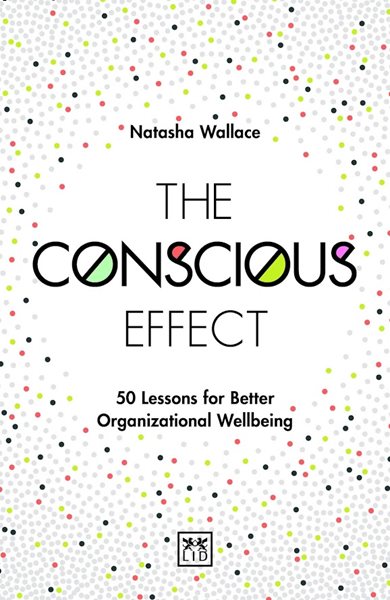Related Articles
Fresh thinking from 4,000 Creators and Innovators

How to be a great leader at any level


Wellness is now part of the conversation in everyday life, yet when it comes to the workplace, many employers are still lagging behind. Here’s how to catch up...
The juggernaut that is the wellness industry is an unstoppable force, growing around 12.8% in the last two years alone. However, it seems that many employers aren’t keeping up.
With at least a third of our lives spent at work on average, and 11 million days lost annually in the workplace due to stress, it seems like a gigantic oversight that less than a tenth of the world’s workforce is able to access a workplace wellness programme.
“If you’re constantly in a state of stress, your body will age at a faster rate because you’re not giving it enough time to rest, repair and grow,” said Michael Adu, Founder of wellness coaching company Stress-Less Fitness, based at Club Workspace Clerkenwell Workshops. “This can lead to a chronic imbalance in stress hormones that can be taxing on the body’s cardiovascular system. As a result, you may find yourself feeling lethargic, slow and unproductive at work.”
Matthew Carlton, Shine Workplace Wellbeing’s Principal Consultant at China Works in Vauxhall, claims that workplace wellness schemes hold numerous positive business effects. “Wellness in the workplace is key, but throwing a token class or two at employees isn’t necessarily a helpful move,” he explains.

Set up in 2018, Shine works with companies to develop wellness strategies designed to improve workplace culture and boost the health and happiness of employees. “What’s right for one company isn’t necessarily going to work for another. A good wellbeing strategy is employee-centric, using staff input and not a set of guidelines decreed by senior management.”
Working out how exactly this is done is more of a science than an art. A good place to start is with a staff survey, says Carlton. “The results can help shape programmes and strategies, including workshops, mental health awareness training, forming wellbeing committees and organising a series of health and wellbeing activities.” Unfortunately, wellness schemes often rank low on the list of priorities for businesses. A mistake? Mounting evidence seems to suggest so. Studies indicate that happy employees are 20% more productive at work (37% for those working in sales) and 49% of employees would accept a reduction in salary if it boosted their sense of purpose at work.
In fact, a study by human resources experts, the Chartered Institute of Personnel and Development, found that those whose organisation had health and wellbeing schemes in place during 2017 had better employee morale and engagement (44%), a healthier and more inclusive culture (35%), and lower sickness absence (31%).
Although businesses often think setting up such initiatives will be time-consuming and expensive, “well-maintained initiatives attract and retain staff, with implementation and running costs substantially lower than recruitment costs,” says Carlton.
Sophie Stainton, Head of Corporate Wellbeing at GO Mammoth, the UK’s largest social sports and fitness club, based at The Light Bulb in Wandsworth, agrees. “The benefits of wellness schemes can be fantastic,” she says. With more than 15,000 weekly participants, GO Mammoth offers bespoke corporate wellness programmes and events for companies like L’Oréal and Hobbs.

Demand is steadily rising too, says Stainton. “Traditionally, companies have invested in large annual Christmas parties, which would inevitably lead to a lack of productivity the following day. Now, employers are realising they can offer alternatives that are much more beneficial for everyone. There is recognition of a direct correlation between a fit and healthy team, and high performance and productivity.”
It’s no surprise, says psychotherapist and counselling Directory member Gary Bloom, who presents TalkSport’s award-winning mental health show, On the Sporting Couch. “During exercise, increased heart rate means more oxygen is pumped to the brain, and other organs too,” he explains. “Since the brain thinks we are going to fight an enemy or run away, it secretes endorphins, which give us a feel-good factor. Research has also shown regular aerobic exercise develops an area of the brain called the hippocampus, which aids memory and learning – crucial in the workplace. In short, it’s a powerful natural antidepressant, and employers would be foolish to overlook the benefits.”
Like Shine, GO Mammoth offers mental health initiatives too – from introductory mindfulness courses to weekly onsite meditation classes, all bespoke and customised to the office space, demographic and environment. “While not every employee will feel the need to take up the offer, there is still a massive taboo when it comes to mental health, especially amongst men,” says Bloom. “When you consider that suicide is the biggest single killer of men under 45 in the UK, effective mental health support within organisations is crucial.”
Everybody benefits, too. “Our brains have mirroring neurons that means when we recognise other people are struggling, we can get an insight into our own problems. Going to a mental health wellbeing class doesn’t mean spilling all the beans about the most intimate aspects of your personal life – maybe the most useful option is to just listen for 20 minutes, and open up lines of communication that weren’t previously there.”

The good news is that implementing a workplace initiative doesn’t have to be costly – nor does it necessarily require external support, either. Siobhan Canniffe is Head of People and Culture at Spacelab, a London-based design and research studio employing just under 40 people and working with clients that include Great Ormond Street Hospital and Goodwood Racecourse. “For us, people have always been – and will always be – at the heart of everything we do. It’s fully embedded in the Spacelab culture,” she says.
Employees of Spacelab benefit from uncapped holiday allowance, flexible working, monthly massages, weekly yoga, a no-email-out-of-hours policy, mental health first aid training, volunteering opportunities, a cycle-to-work scheme and the introduction of personal development plans, plus social events (think monthly birthday lunches and parties).
Informal conversations and staff workshops mean employees are “invested in the initiatives as they’ve been involved in their development,” she says. “Communication has been key to helping people adjust to some of the more progressive initiatives.” Like uncapped leave, for example. “Every member of the team retains their statutory leave plus bank holidays, as well as being entitled to take additional days off without limit or the need for formal approval. Just as we trust our team to manage their own time and workload when it comes to normal working days, the same goes for holiday approval.”
It seems to be working. A recent survey at Spacelab revealed a 27% increase in staff seeing the company as a psychologically and emotionally healthy place to work. Furthermore, since implementing the uncapped leave policy, the average number of annual leave days taken has increased from 25 to 32.5 (excluding bank holidays) – with a mixture of longer periods being taken to go abroad to visit family members, and shorter last-minute time off. Crucially, the number of sick days has decreased by 45%, and overall engagement has increased by 58% over the last two years. Now, 92% of people say they are proud to work at the company.
At Parkhall Business Centre in Dulwich, Bodyshot Performance is working with businesses of 25–500 people to create a culture of energy, vitality and performance. Rising to the four-week Thrive in Five Wellbeing at Work challenge, Workspace implemented Bodyshot’s wellbeing tips – and the results were a success.
“The philosophy behind our ‘Thrive in Five Tips’ is advice to optimise your mind, body and wellbeing in five minutes or less,” says Founder Leanne Spencer. “The tips help to give businesses a competitive advantage.”
Happier, healthier staff who enjoy their jobs? Surely it’s a no-brainer…
In short, exercise is a powerful natural antidepressant, and employers would be foolish to overlook the benefits.
Gary Bloom, Presenter of On the Sporting Couch on TalkSport
For further reading, check out The Conscious Effect by Natasha Wallace, published by Lid Publishing at The Record Hall.

To set up a wellbeing strategy with Shine Workplace Wellbeing, contact Matthew Carlton at contact@shineworkplacewellbeing
Don’t forget to pick up your copy of homeWORK magazine in the lobby area of your local Workspace centre. Either that, or you can read homeWORK online where we speak to businesses at the forefront of their fields on subjects such as finance, AI, wellbeing, and much more.


Mon-Fri 9am-5.30pm